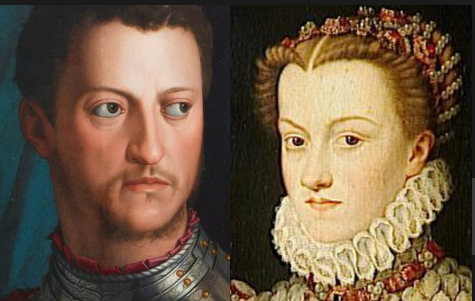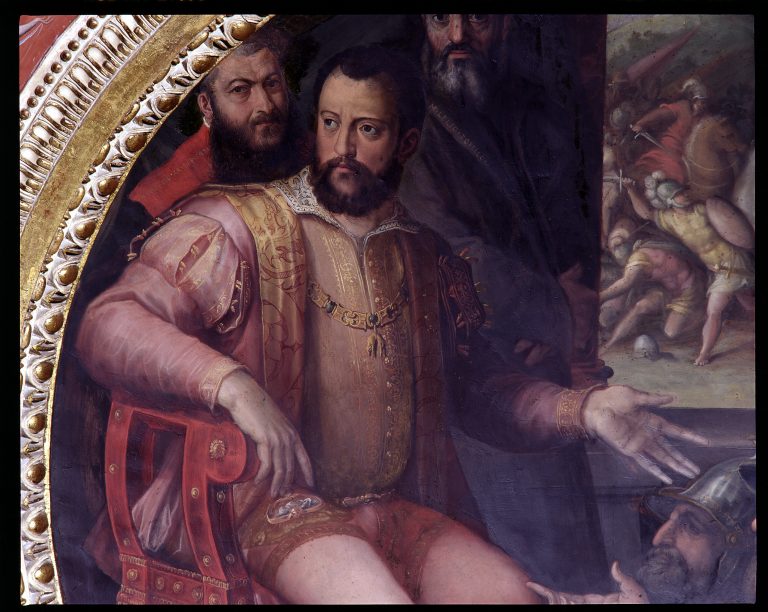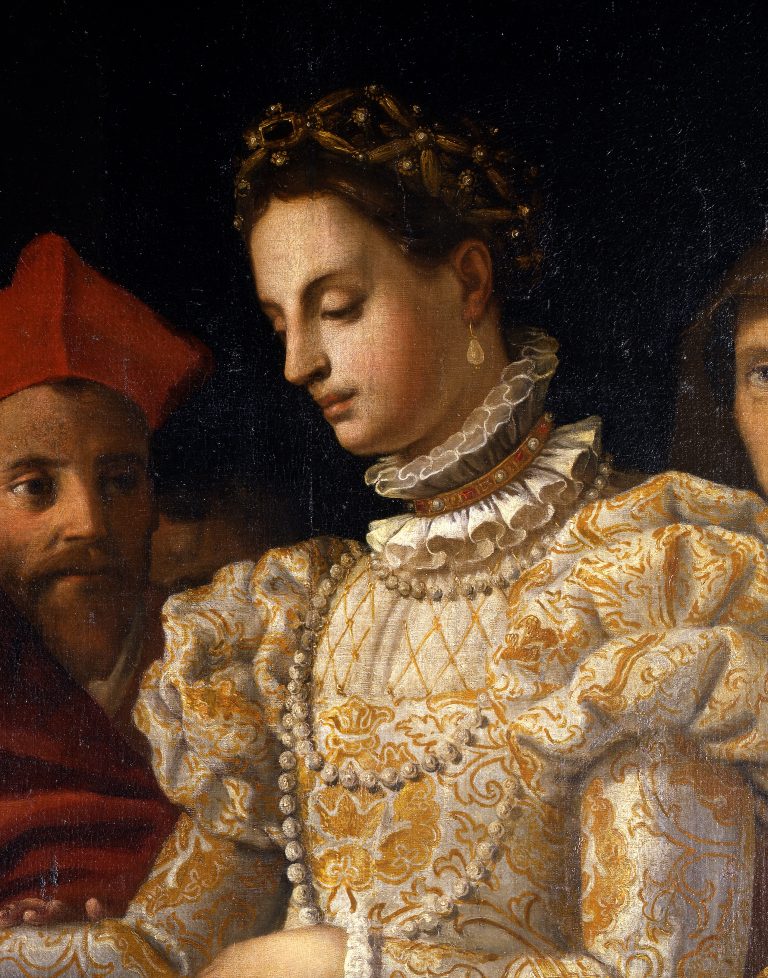Celebrating 500 years of Cosimo and Caterina

2019 will be a year full of celebrations for Florence. I’m sure you’ve heard about the 500 year celebrations for Leonardo Da Vinci but did you know that another two historical figures are celebrating 500 year ‘birthdays’ this year?
Cosimo I and Caterina de ‘Medici, both born in 1519, will be celebrated as Florentines pay homage to the memory of these two important figures who left their indelible stamp in the history of Florence.

Over 50 events promoted by the Organizing Committee will range from exhibitions to concerts, guided tours, meetings and conventions, theatrical events, and real-time travels with historical representations and themed tastings; a rich program that will be spread over the whole of 2019.
A year of events to tell, understand and remember who Cosimo, the first Grand Duke of Tuscany, was, and Caterina de Medici, queen of France, mother of three sovereigns and a political figure among the most authoritative of her time.
Many initiatives will be taking place over the next few months, from themed exhibitions at the Uffizi, Bargello National Museum, to Palazzo Vecchio, Palazzo Medici Riccardi, the State Archive and the Laurentian Library. There will also be guided tours of the Medici villas of Villa la Petraia and Villa di Castello, including theatrical and musical events.
So let’s get to know The Grand Duke and Queen a little better ………..
IL GRANDUCA – COSIMO 1

Cosimo was born in 1519 in Florence, to Giovanni de ‘Medici and Maria Salviati, niece of Lorenzo the Magnificent and representative of the main branch of the family. When Cosimo was 7 years old, his father died and so Cosimo moved with his mother to Trebbio, a town in the Mugello, where he spent his childhood years between hunting and outdoor sports, such as fencing, wrestling, horse handling, fishing and swimming.
He was considered a young man of weak spirit who was not inclined to politics or to command, but when he came to power, in 1537, succeeding Alessandro de ‘Medici, (known as Il Moro, who had been murdered by Lorenzino de’ Medici), Cosimo demonstrated himself to be a skilful and centralized politician, capable of consolidating the dominion of the Medici dynasty over Florence and expanding it to most of Tuscany. Starting from the battle of Montemurlo (1537), where the troops led by Alessandro Vitelli defeated the Florentine “exiles” backed by the French, until the break with the traditional alliance of Florence with France, in favour of one with the Spain of Charles V, Cosimo’s ambition and determination was a step forward and not of one lacking leadership as the powerful of the time would accuse him of.
On 29 July 1539, under the auspices of the Spanish emperor, Cosimo married Eleonora, daughter of Don Pietro di Toledo, viceroy of Naples and brother of the Duke of Alba. The choice of the bride had not only political and economic interests, Cosimo and Eleonora were also bound by deep affection and lived, as biographer Baccio Baldini recalls: “with a lot of rest and pleasure, happily for many years”; until her death in 1562 due to malaria.
From 1543 Cosimo started a series of institutional and administrative reforms that consolidated the centralization of power towards his figure and which would leave him greater political independence. Cosimo perfected the state system, with reforms in the fields of administration of justice and of the superintendency of the domain, maintaining the legal and administrative division between the Duchy of Florence and the Duchy of Siena, following the annexation of 1555-57.
Alongside an authoritarian and centralizing policy, Cosimo launched a series of important cultural reforms. In 1543 he reopened the University in Pisa and established the Collegio di Sapienza, for poor students of the duchy. Between 1541 and 1542 he converted the Accademia degli Umidi into the Florentine Academy, whose activity was linked to the diffusion of the “Tuscan” language and to the foundation of ducal historiography. Meanwhile, he moved his residence from Palazzo Medici Riccardi to Palazzo Della Signoria. In 1560 he commissioned Giorgio Vasari for the construction of the Uffizi. On the advice of the architect from Arezzo, in 1563, he founded the Academy of Arts and Design, an institution still active today, whose role and prestige grew thanks to the extraordinary contribution of Academics such as Michelangelo Buonarroti, Francesco da Sangallo, Benvenuto Cellini, Bartolomeo Ammannati, the Giambologna, Galileo Galilei, etc. In the meantime he expanded the majestic building of Palazzo Pitti, completing the Boboli Gardens and connecting the new residence with Palazzo Della Signoria through the Vasari Corridor.
In 1563 Cosimo left the government and rents of the state to his eldest son Francesco, reserving for himself the ducal title, the right of appointment to the most important offices, the allodial assets and the commercial capitals, as well as the right to consent in the most important political questions. In 1569 he obtained the title of Grand Duke of Tuscany from Pope Pius V. After the death of Eleonora, he married Camilla Martelli, from whom he had a daughter, Virginia. Cosimo died in 1574, in the Villa di Castello, following a stroke.
LA REGINA – CATERINA

Caterina de ‘Medici was born in 1519 in Florence, in the palace of the Via Larga (now Palazzo Medici Riccardi), to Lorenzo II de’ Medici, Duke of Urbino and Madeleine de la Tour d’Auvergne, daughter of Count Jean de Boulogne and of Caterina di Borbone. She lost her parents a few weeks after birth, remaining the sole heir of the Medici house. At the behest of great-uncle Leo X, the “Duchess of Urbino” was taken to Rome, and at his death, her guardianship passed to Clement VII.
In 1525, she returned to Florence, but due to political unrest and the plague that raged, she was transferred to the monastery of the Murate Benedictines. After the restoration of the Medici dominion, Clement VII recalled the orphan to Rome. Caterina was now eleven years old, making her a precious object in the Pope’s marriage policy, aimed at favouring the interests of the Curia and the Medici family in the context of the struggle of the great powers. The negotiations for Caterina’s marriage with the duke Enrico d’Orléans, second son of King Francis I of France, are in fact closely connected with the rivalry between Habsburg and Valois for dominance in Italy. The negotiations for Caterina’s French wedding came to fruition in the summer of 1533, in Marseille, but not before having “greeted” Florence and Italy with a sumptuous banquet held at Palazzo Medici.
In France, the young Duchess had a secondary role. The death of Clement VII, in 1534, had caused all political expectations related to marriage to vanish, and the rank of the husband, who was not the crown prince, relegated her to a marginal position at the French court. Although, in 1536, on the death of Francis of Valois, Caterina and Henry became the heirs to the throne of France (effectively becoming sovereigns in 1547).
In 1544 Caterina gave birth to the first heir: Francesco, the future Francesco II. The birth was welcomed by numerous celebrations because Caterina was considered infertile. Proving everyone wrong, within twelve years, Caterina and Henry gave birth to ten children, of whom seven remained alive and three became rulers of France: Francis II, Charles IX, Henry III. Caterina was therefore called “the queen mother”.
Caterina’s presence at the court in France recalled several Italian exiles, in particular, the Florentine “exiles”, opponents of Cosimo I, considered by their usurper of Caterina. In 1559 the death of Henry II led Caterina to be the true ruler of the kingdom of France. As a manifestation of pain, she began to dress in black as a sign of mourning, going against the tradition that saw the use of white as the colour of mourning for the queens. From this moment Caterina assumed a decisive role alongside her heirs to the throne of her husband: from Francis II, who died in 1560, to Charles IX, under whose empire the wars of religion and the historic Night of St. Bartholomew took place; to finish with Henry III.
Caterina was a key figure in the cultural and political sphere. She died on January 5, 1589, in the castle of Blois. She was buried in the basilica of Saint-Denis, next to Henry II in the tomb in the rotunde of the Valois.
